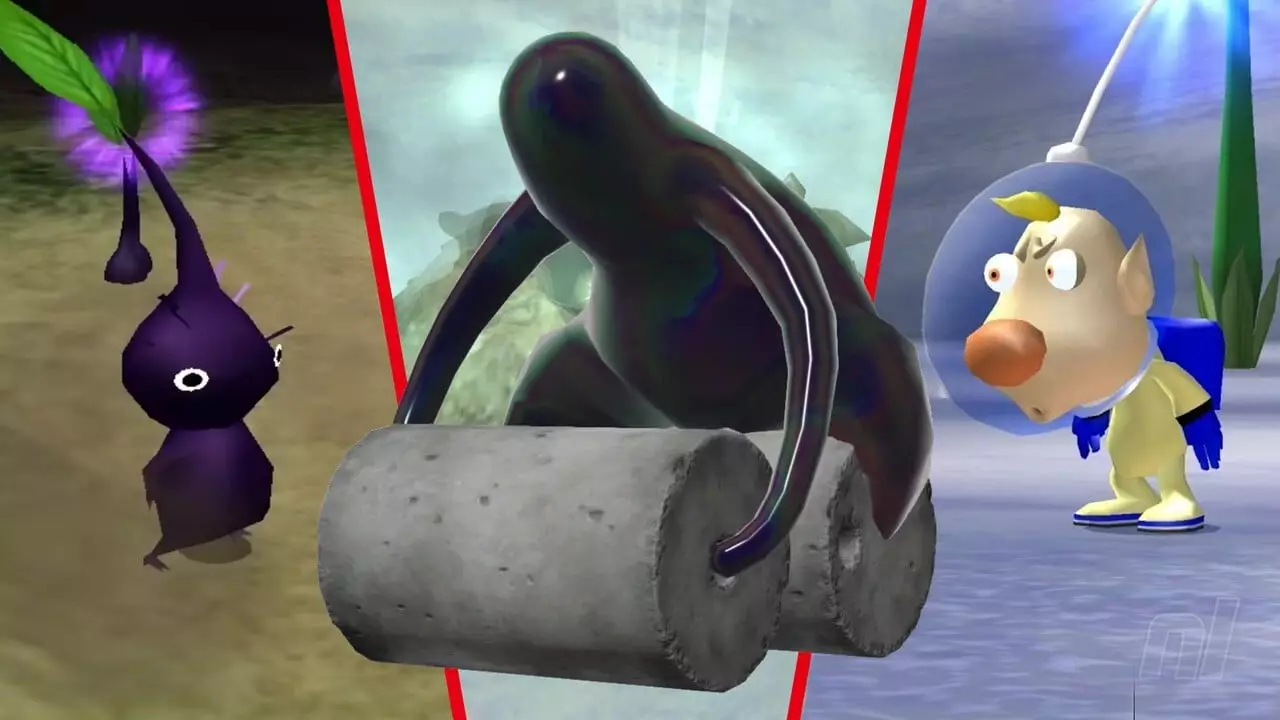As gaming enthusiasts, we often look back on our childhood experiences with a mix of nostalgia and apprehension. For many, certain games embody not just playful moments but deeper emotional responses. Pikmin 2, released two decades ago, holds a peculiar place in the hearts of its fans—not just as a charming adventure featuring colorful little creatures and lush landscapes, but as a harrowing expedition rife with tension and stress. As we celebrate its 20th anniversary in Japan, it’s time to peel back the layers of this seemingly cute game and explore its underlying complexities, particularly the dreaded Waterwraith.
In the collective memory of those who navigated the colorful yet treacherous landscapes of the Pikmin universe, the cute aesthetics can be deceiving. The adorable Pikmin, with their vibrant colors and whimsical antics, mask a brutal reality where survival is anything but guaranteed. Players, at first glance, may find themselves charmed by the game’s visuals; however, as they dive deeper into the mechanics and challenges, a much darker narrative emerges. The world of PNF-404—void of unconditional safety—transforms itself into a constant battlefield where the stakes are high, and the consequences of failure are all too real.
One of the most unforgettable stages within Pikmin 2 is the Submerged Castle, a level that has haunted the dreams of players since its debut. The decision to restrict access to Blue Pikmin introduces an element of strategic limitation that forces players into a state of relentless anxiety. Navigating through five menacing sublevels, gamers encounter a slew of hazardous elements ranging from poison to fiery foes, all while managing time—an ingenious yet cruel mechanic that keeps the adrenaline pumping.
The design choice to present a five-minute countdown timer creates an unsettling tension that permeates throughout the dungeon. With each tick of the clock, a palpable sense of dread builds, emphasizing the game’s theme of urgency. It’s not just about defeating enemies; it’s also about the impending doom represented by the Waterwraith. The manifestation of time pressure in video games often leads to heightened emotional responses, and Pikmin 2 capitalizes on this aspect brilliantly. Every player isn’t just trying to conquer obstacles; they are juggling survival under the shadow of a lurking horror.
For many, the Waterwraith represents a pinnacle of horror within the gaming world, transcending traditional villainy. Dressed as a gelatinous entity straddling menacing rollers, this foe is not just a screen presence—it embodies fear itself. Cruel in its design, the Waterwraith holds the terrifying ability to crush Pikmin effortlessly, rendering traditional offensive tactics ineffectual. Instead of engaging in combat, players are thrust into frantic evasion, their only reprieve being to hide from this mass of doom.
The psychological implications of facing such design choices cannot be overstated. Players are not merely memorizing attack patterns or seeking a combat strategy; they are grappling with an innate dread. The fear generated by the Waterwraith does not stem from its monstrous appearance alone but from the existential risk it poses—defeat means the obliteration of your hard-earned Pikmin allies and loss of progress.
As both newcomers and veterans of the series dive back into Pikmin 2, it’s important to acknowledge the mixed emotional landscape the game presents. One moment, players might be engaged in the lighthearted gathering of treasures; in the next, they could find themselves confronting the haunting specter of the Waterwraith, a nightmare that prompts reflection long after the console has been switched off.
Pikmin 2 stands as a testament to Nintendo’s storytelling prowess, balancing heartwarming visuals with gut-wrenching tension. While the Waterwraith may seem like an outlier in a catalog of family-friendly titles, it reflects a fearless design philosophy that draws players into real emotional stakes. This contrast between aesthetics and actual gameplay serves as the core experience of Pikmin, cleverly embedding childhood joys with darker, more unsettling elements.
Ultimately, it’s this duality that makes Pikmin 2 enduring. The game challenges players not just to conquer levels, but to confront their own insecurities and fears in the guise of adorable yet fragile beings. As fans eagerly anticipate future installments like Pikmin 5, many question whether their hearts can withstand another encounter with the Waterwraith. In a world where cute meets chaos, the reality of Pikmin 2 reminds us that gaming can be as beautiful as it is traumatic—a complex reflection of childhood experiences that linger long after the screen fades to black.

